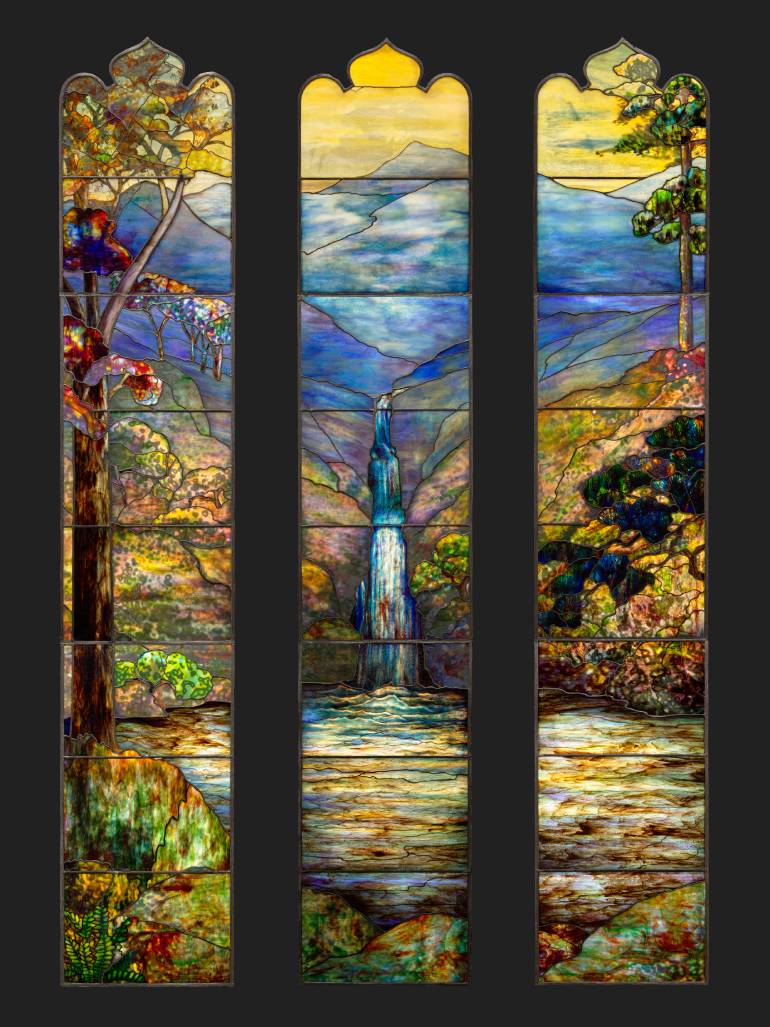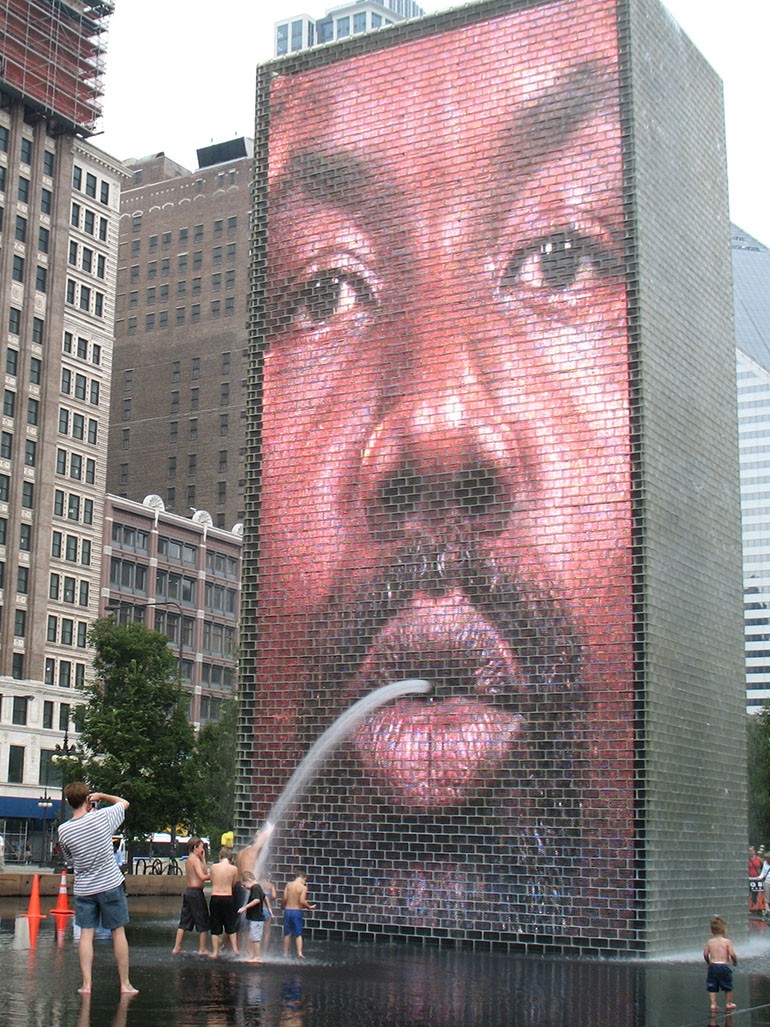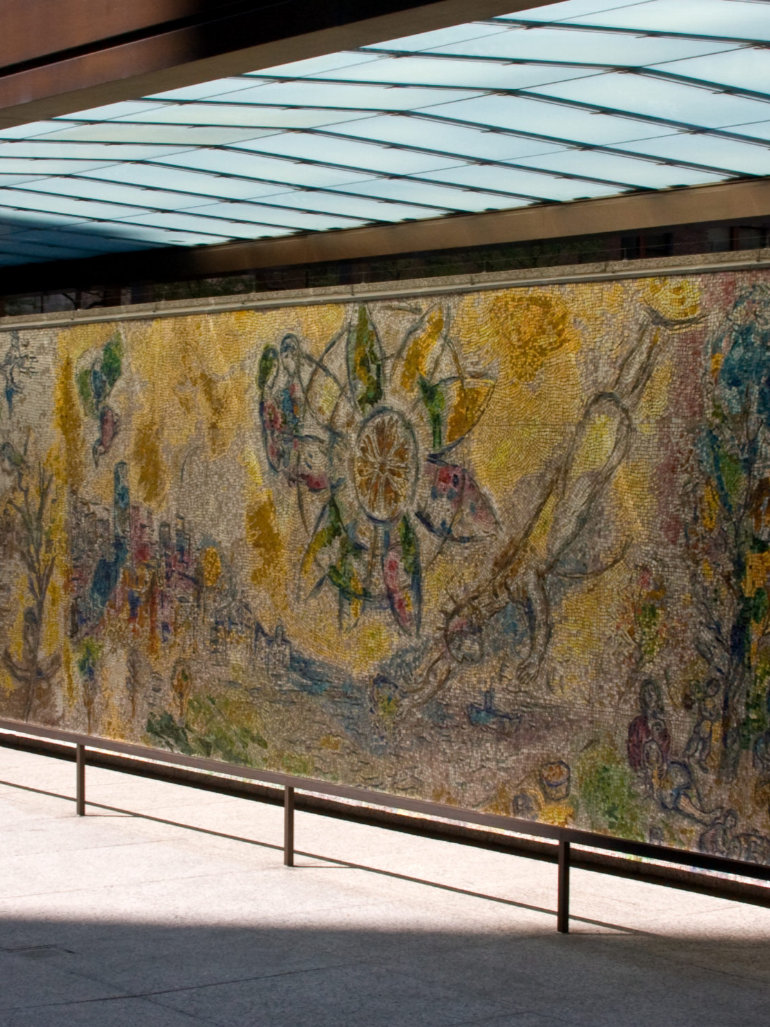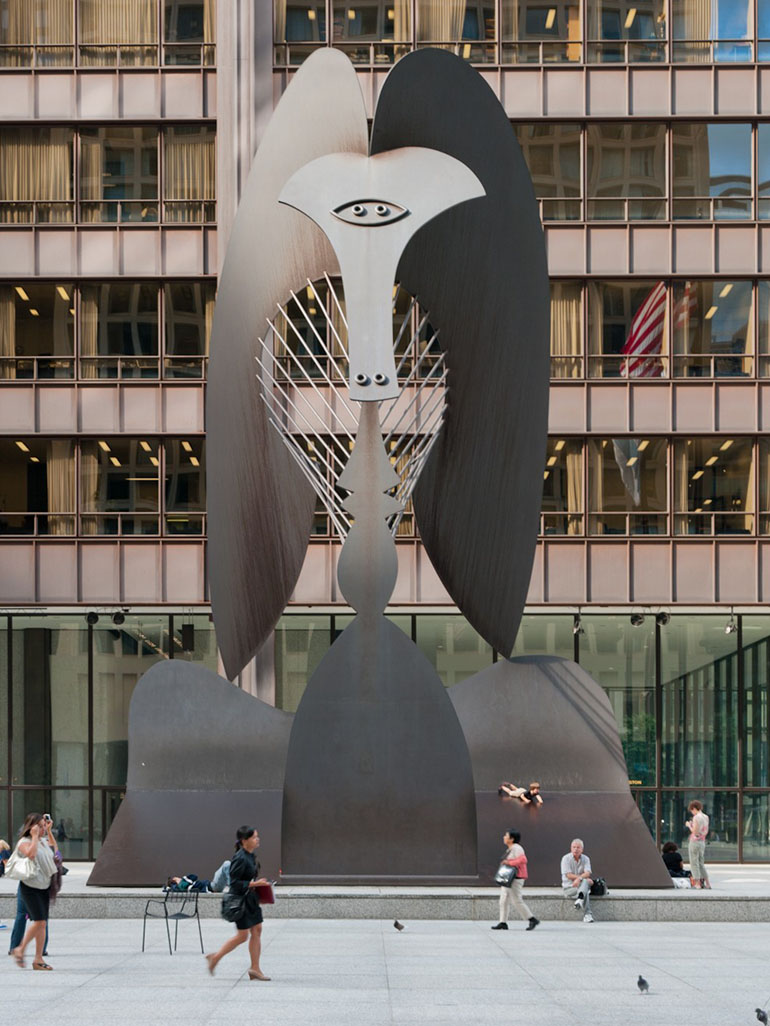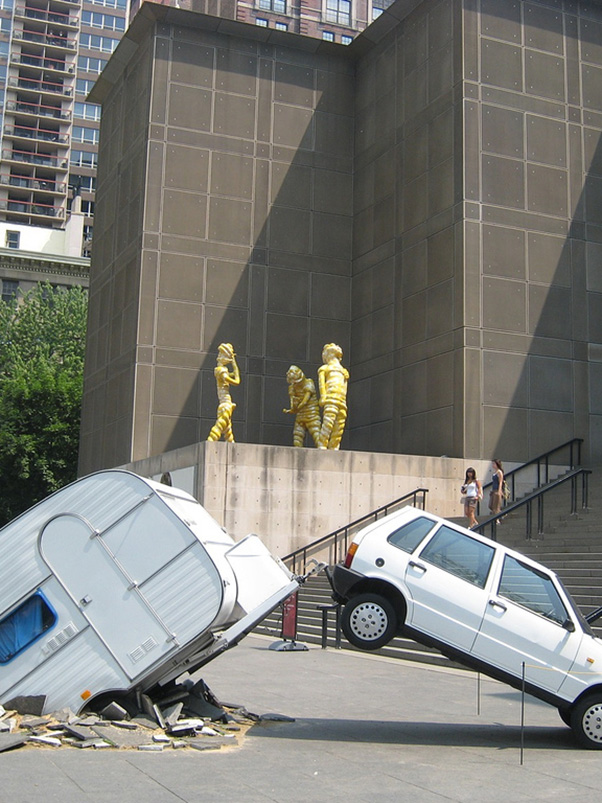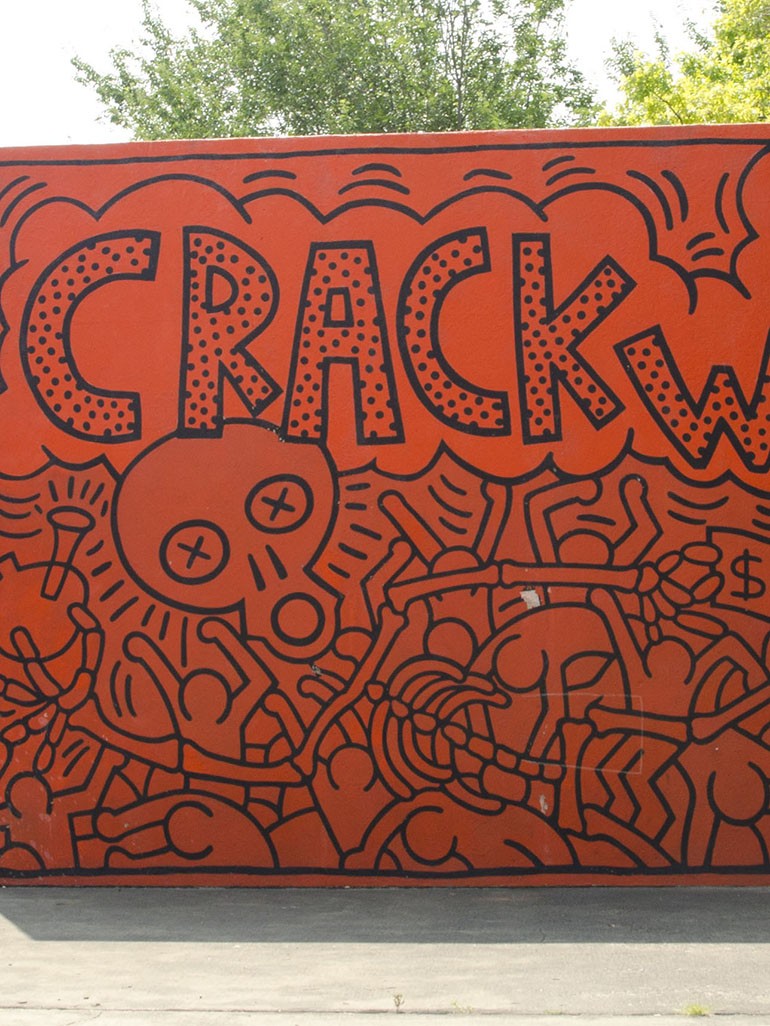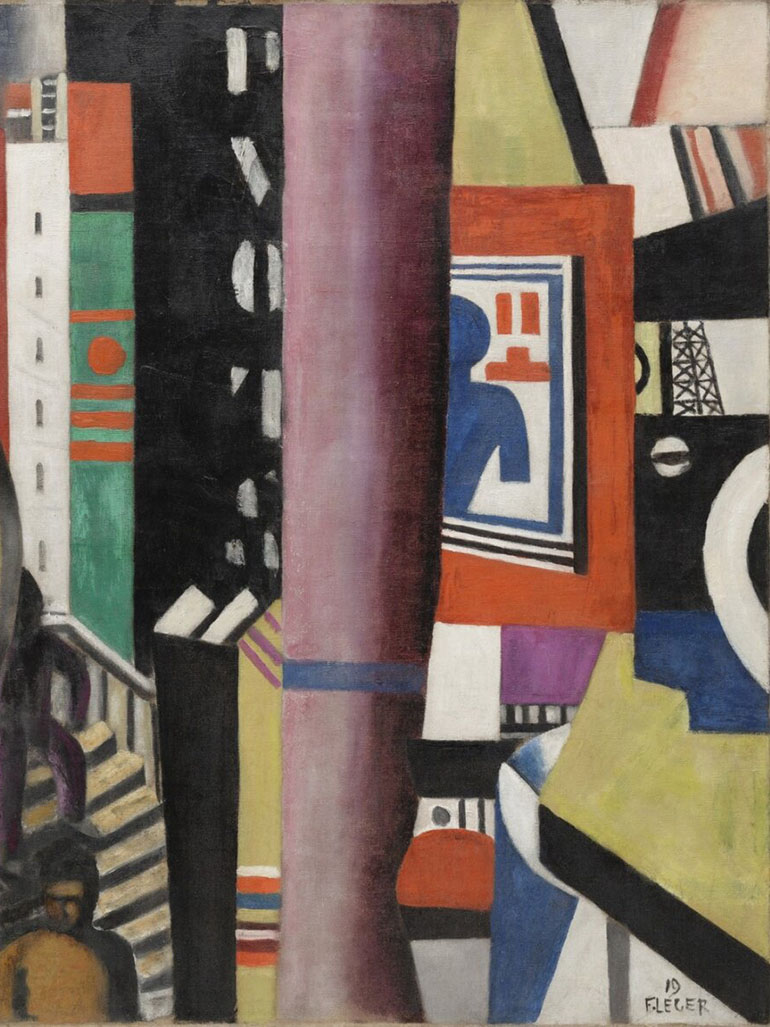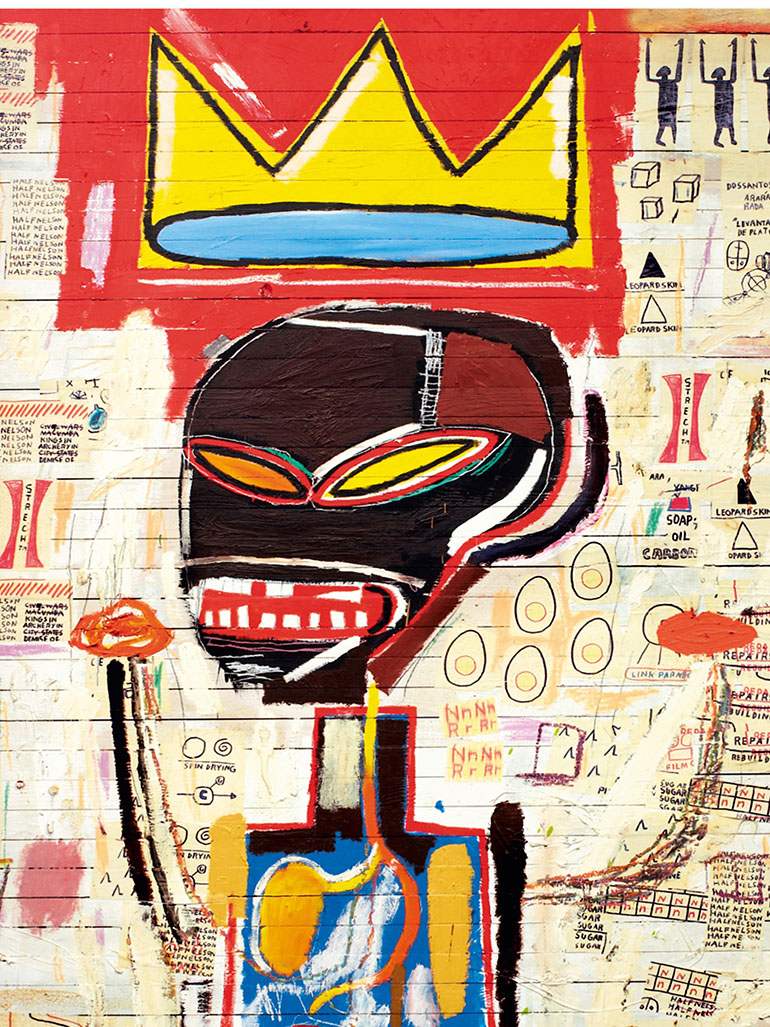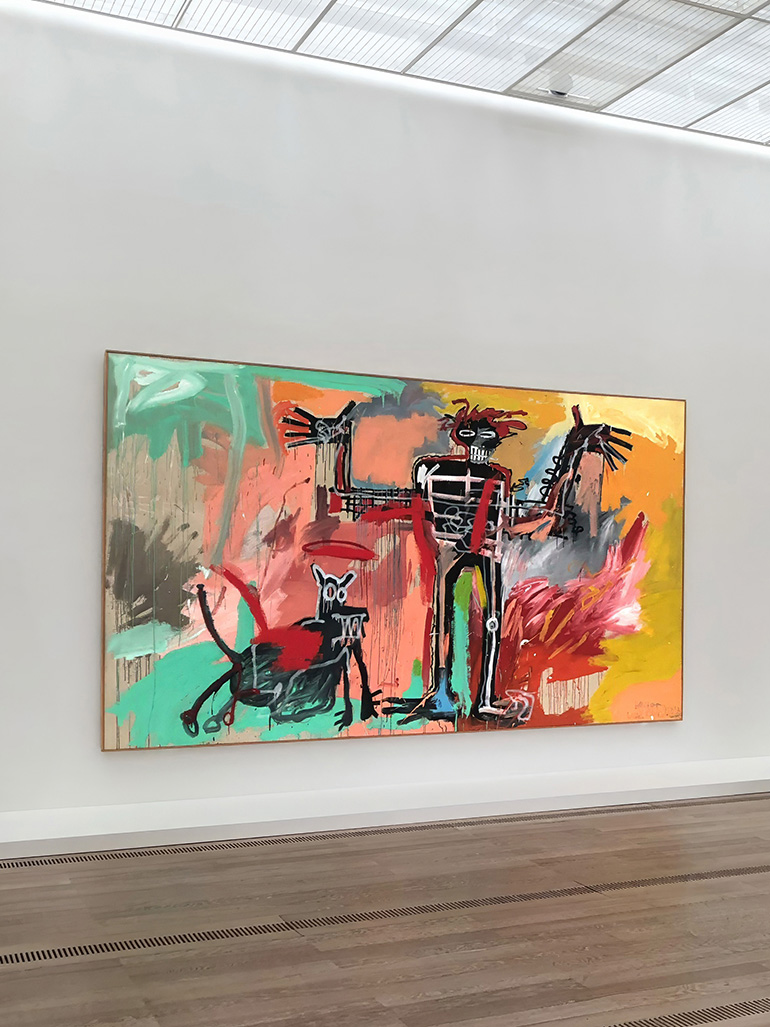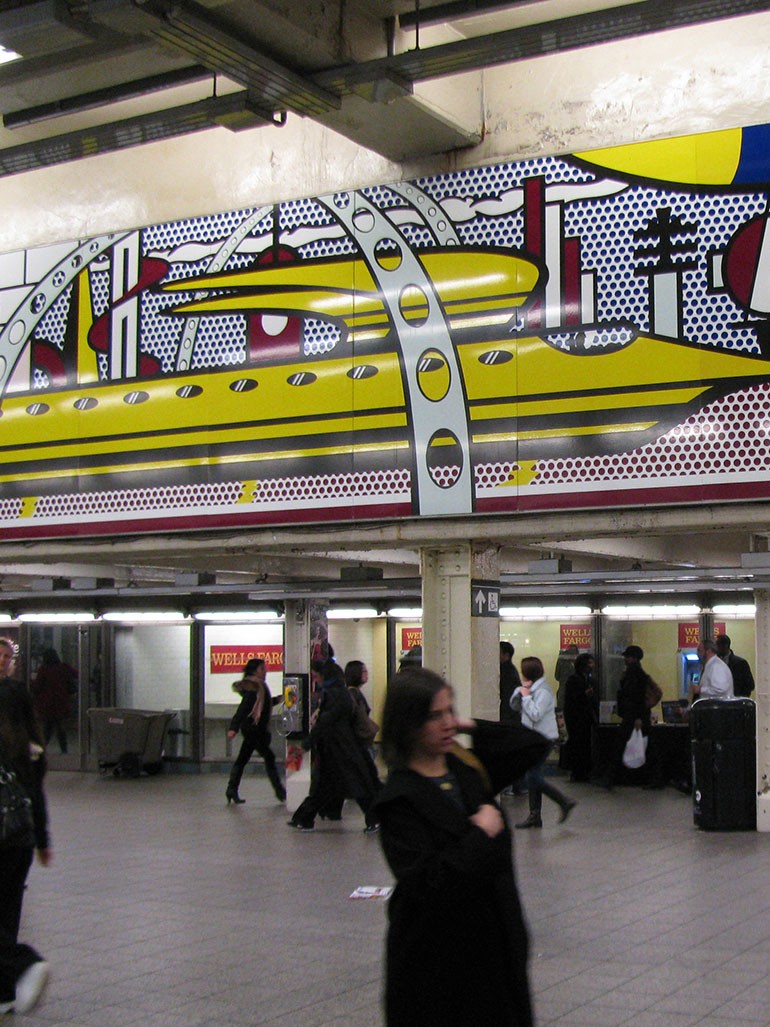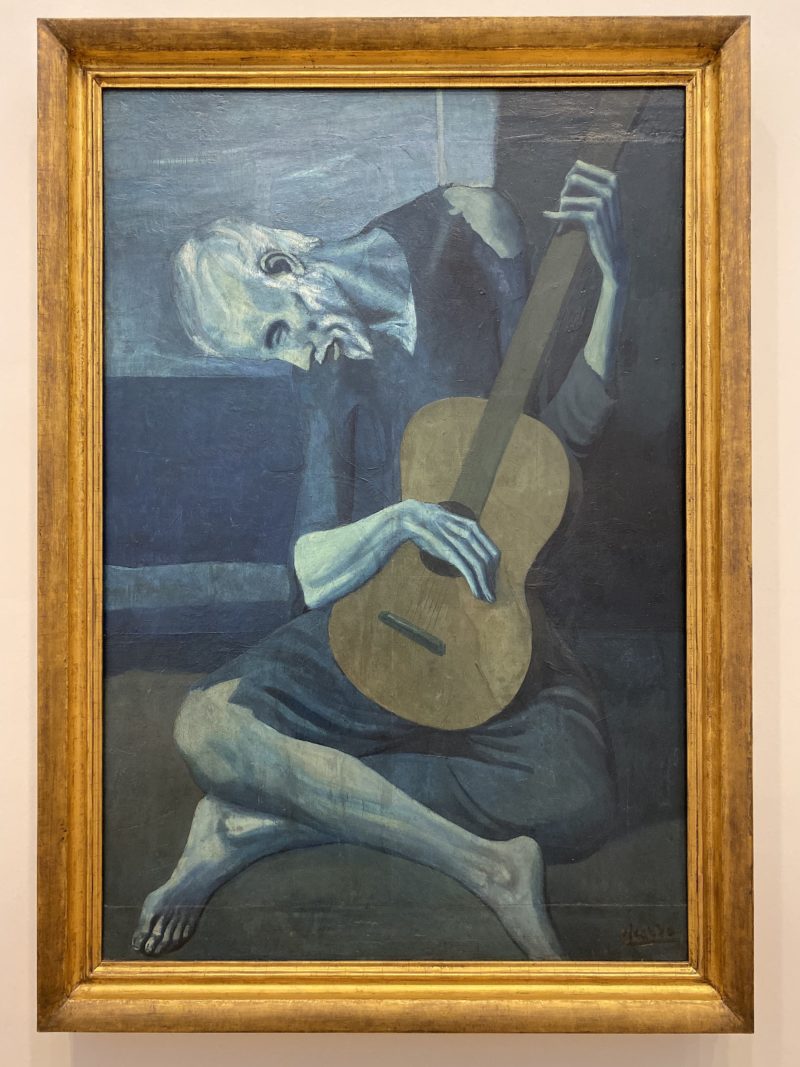
111 S Michigan Ave, Chicago, IL 60603 Copy to clipboard
41.879584, -87.623917 Copy to clipboard
Before you go
Facilities: Restrooms, cafes, and a gift shop are conveniently located nearby. Strollers and wheelchairs are available free of charge.
Photography: Non-flash photography is permitted, so feel free to take photos of this iconic painting.
Time management: Plan to spend at least 2–3 hours exploring the museum. Visit earlier in the day or during less crowded hours for an uninterrupted experience. Allow extra time to explore adjacent galleries featuring more Picasso works and other modern art masterpieces.
Best visit time
Visit earlier in the day, particularly on weekdays, to avoid peak crowds and enjoy a quieter experience.
The soft natural light streaming into the museum during morning hours can enhance your viewing experience of the artwork and adjacent galleries.
Consider visiting in spring or fall when Chicago’s weather makes exploring the city more pleasant.
Directions
Parking
Valet parking is available at the Modern Wing entrance (159 E Monroe St) for per car during museum hours. Millennium Garages nearby offer public and accessible parking with Art Institute member discounts available.
By subway
The Brown, Green, Orange, Pink, and Purple lines stop at Adams/Wabash, a 2-minute walk to the museum. The Red and Blue lines stop at Monroe, a 5-minute walk.
By bus
Several CTA bus routes, including 3, 4, 6, 7, 26, 143, 147, and 151, stop near the museum along Michigan Avenue.
By train
The museum is accessible via Metra's Van Buren and Millennium stations, both within a 5-minute walk.
By bike
Divvy bike-sharing stations are available near the museum, with convenient locations by Millennium Park and on Michigan Avenue. Visit divvybikes.com for details.
Why was Pablo Picasso important?
Pablo Picasso 1 was one of the foremost and persuasive artists of the 1st half of the 20th century. Primarily associated with pioneering a movement known as Cubism, he also made major contributions to surrealism 2, symbolism and a range of other classical styles that persisted during the 1920s.
Unlike many other painters of his time, Picasso possessed an eclectic attitude to style. However, his works were often typified by a single and dominant approach that allowed him to easily interchange one style for another, sometimes even in the same piece. It is perhaps this ability to switch styles that allowed him to maintain his longevity in the industry. Even though artists came and went throughout Picasso’s existence, he remained relevant and active in art circles until the end of his life in 1973.
According to some records, it is estimated that Picasso created an unbelievable total of over 50,000 pieces of art. His works influenced many styles and movements, namely German Expressionism, Constructivism, Vorticism, Futurism and many more.
The Blue Period
What led to Picasso’s Blue Period
What led to Picasso’s Blue Period
Although Picasso is considered one of the greatest artists ever, he was not always as successful or as confident as his works may portray him. In fact, when he was just starting as an artist, he faced a lot of tragedy, emotional fragility, and poverty that obviously impacted his work. Like many artists, Picasso channeled many of his emotions into what is considered his first pioneering body of work, referred to as the Blue Period.
How Casagemas’ death impacted Picasso
Picasso’s Blue Period commenced in 1901 when Picasso was just 19 years old. At the time, Picasso had associated himself closely with a group of radical writers, anarchists and artists. Among them was a close friend and Spanish poet, known as Carles Casagemas. Although brilliant in his own right, Carles Casagemas committed suicide by shooting himself in the middle of a dinner party that year due to an incident with his lover.
It was Carles Casagemas’ sudden death that prompted Picasso to start painting in blue. The death of his close compatriot affected him deeply and it is what catalyzed the paintings that were created soon after his death. All of the paintings created by Picasso during the Blue Period were characterized by cold colors such as nauseating greens, dark greys and, of course, melancholic blue hues.
One of Picasso’s first paintings during the Blue Period was created soon after his friend’s death and was titled The Death of Casagemas, 1901. In the painting, Casagemas appeared to be swaddled in white sheets, as though asleep. However, Picasso also added a bullet hole on the subject’s temple to represent the tragedy that took his life.

The Blue Period self-portrait
By the time he was creating his first painting in the Blue Period, Picasso had not yet managed to find his voice as an artist or sold enough paintings to support himself, which further worsened his psychological state. Picasso’s use of the color blue persisted when he created a self-portrait of himself. In this portrait, he represented himself as a 50-year-old frail man instead of painting himself as he really was at the time, which was a 20-year-old painter whose career was full of endless possibilities.
Why did Picasso choose blue?
Picasso chose to use blue to communicate the pain and desolation that he was feeling at the time. During the Blue Period, Picasso continued to feature outcasts as the subject matter of his paintings. In addition to failed or failing artists such as himself, he also included subjects that were considered exiles and recluses, such as drunkards, the homeless 3, prostitutes and of course, individuals that were struggling to keep up with the pressures of day to day life.
By using blue in his background, Picasso was able to convey elements of vulnerability in his work. Blue also highlighted various facets of trouble such as creative anguish, loss, poverty, grief, and dejection in a single canvas. Interestingly, most of Picasso’s pieces during this Blue Period were executed on top of earlier works. One such piece created during the Blue Period was The Old Guitarist.
The Rose Period & Transitioning to Cubism
After 1904, Picasso’s style and palette started to change and brighten. For close to a year, he embarked on painting in a style known as the Rose Period, which was a lot happier and cheerful than the Blue Period. The Rose Period, unlike the Blue, was characterized by the use of red and pink hues, which were more uplifting.
After a year or so of focusing on the Red Period, his style changed and darkened to feature forms that were more solid and heavier in aspect. It was during this period that Picasso met and became close allies with Georges Braque 45. Together the two created a new movement that was known as Cubism 67.
The Old Guitarist, 1903
Introduction
Introduction
The Old Guitarist was created in 1903 in Barcelona, Spain, at the height of Picasso’s Blue Period. The Old Guitarist was an oil painting on canvas. Like many paintings of that time, it featured a monochromatic blue palette and an overall impoverished tone with the distinguished exception of the guitar, which Picasso rendered in a much warmer, brown hue.
What the painting shows
The Old Guitarist, also sometimes referred to as the blind guitarist, featured an old man whose skins and bones were visible. Though clearly weak and feeble, the old man appeared to latch on to his guitar almost as though he was seeking redemption for his serious state of affairs. The pitiful state of the old man was depicted by his pale blue skin, his weak and hungry body, as well as his torn clothes. His sad state was further highlighted by his blindness and the general atmosphere around him, which was reflected by the sadness of the guitarist. His environment was also painted to represent the life that lower-class individuals lived at the time.
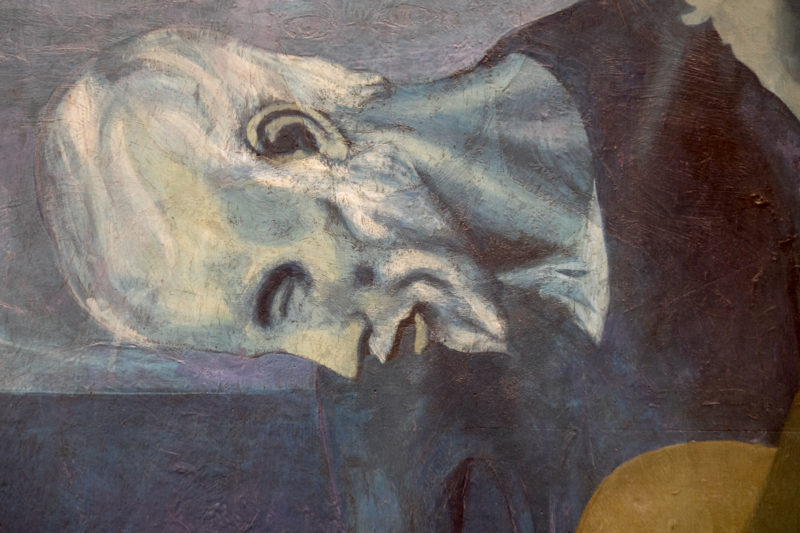
Medium & other features
Picasso used the process of oil painting to complete this masterpiece. Examining the painting through modern infrared technology has shown three more figures in the painting other than the old blind guitarist. The three figures are an old woman, a young woman, and an animal. If you pay close attention to the painting, you can see all three figures with your naked eye. Some historians believe that Picasso meant the painting to have the figures, while others believe that Picasso was too poor to afford a canvas. Hence, he painted on a wooden table at his home that already had these figures.
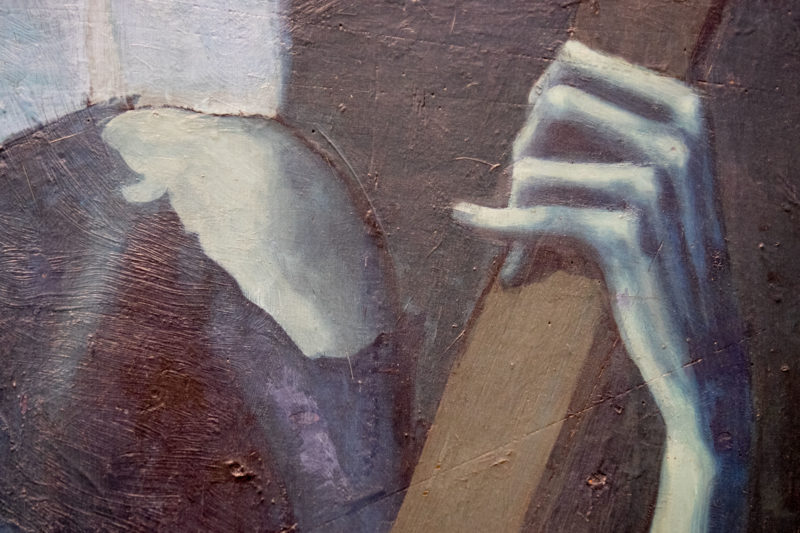
Analysis & Meaning
In the painting, the guitar held by the blind man was the only element that had a color variation. The brown color used was intended to symbolically represent the only tool that the man could use to redeem himself or get himself out of his poor state. Picasso used brown for the guitar instead of the ubiquitous blue to represents the old man’s only hope for survival. As such, Picasso painted the man as though leaning on the guitar with the hope that the music he produced would at least give him some reprieve from his terrible situation.
The Old Guitarist by Pablo Picasso still has universal appeal today as not much has changed over the years related to the predicament faced by lower class societies. Picasso carefully selected elements in the Old Guitarist to generate a reaction from his audience.
The sad, melancholic state was used by design. It was intended to haunt onlookers in a way that would make them question why the working class and high-class individuals continued to prosper while those that needed the most help continue to languish in poverty.
Some people believe that Picasso took his inspiration from the famous painting Hope 89 by English painter George Frederic Wallace.
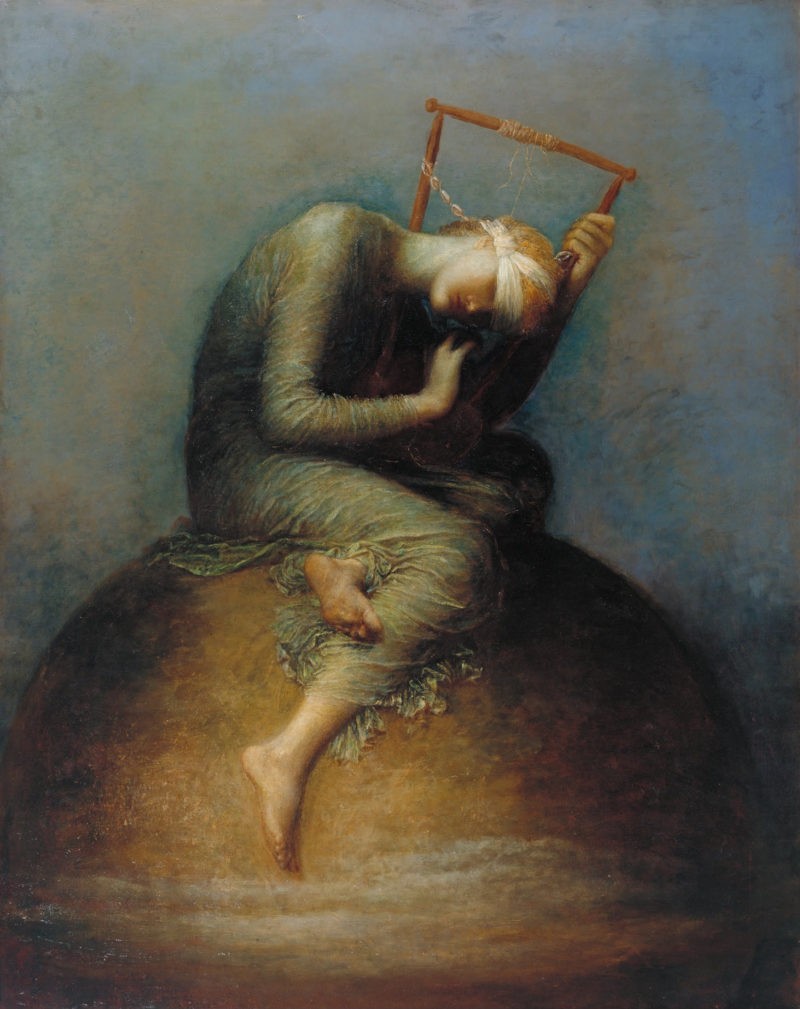
The old man as a symbol for artists?
According to some, Picasso used the old man as the subject of his artwork to represent the life of isolation that most artists are often forced to live. Although music and art are often the things that bring society together, these elements also become burdens that isolate artists from the rest of the world. And yet, despite the isolation, the guitarist depends on it for his survival. As such, the Old Guitarist was painted to not only represent Picasso’s criticism of society, but it was also created as a metaphor for human existence.
Since the Old Guitarist was created during Picasso’s Blue Period, the painting represented a great deal of sorrow and grief. The melancholic tone of the piece is highlighted by Picasso’s use of blues and dark colors. The hardships that Picasso was enduring at the time are also reflected in the artwork. The artwork depicts a poor man hunched over his guitar, representing Picasso’s own low standard of living at the time.
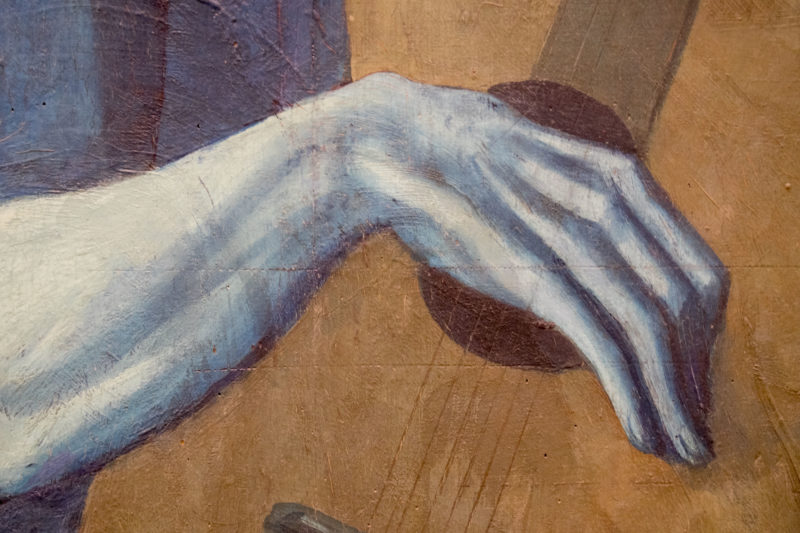
The Old Guitarist’s worth & location
A painting is worth more on a public display that at someone’s private residence. The Old Guitarist sits at the Art Institute of Chicago 10 where thousands of people view it daily. Some experts in the field believe the painting is worth more than 100,000,000 USD, but because this work is likely never going to be sold, it might actually be considered to be “priceless.”
Video: Picasso documentary
59 min 11 sec
Old sketches underneath the ‘Old Guitarist’
Old sketches underneath the ‘Old Guitarist’
As mentioned earlier, Picasso’s artwork during the Blue Period often included the covering of old sketches. Like many of his artworks created during the Blue Period, the Old Guitarist also had older sketches underneath that may not be visible to the naked eye but are apparent when placed underneath an X-ray machine. Because the piece bore many layers of paint, the Old Guitarist appears to have a choppy feel and appearance, which depicts Picasso’s strong emotions and the ever-changing mind of a painter.
Conclusion
Overall, Picasso was able to highlight the plight of the Old Guitarist outstandingly well through his exceptional use of color. Although the theme of desolation and hopelessness is prevalent, Picasso also conveys hope and the ability of the guitarist to triumph over the negative forces affecting his craft.
More by Pablo Picasso
Explore nearby
The Art Institute of Chicago

 Jaume Plensa's Crown Fountain0 km away
Jaume Plensa's Crown Fountain0 km away Marc Chagall's Four Seasons mosaic1 km away
Marc Chagall's Four Seasons mosaic1 km away Pablo Picasso's Chicago sculpture1 km away
Pablo Picasso's Chicago sculpture1 km away Elmgreen & Dragset's Short-CutInstallation ended (dismantled in 2005)2 km away
Elmgreen & Dragset's Short-CutInstallation ended (dismantled in 2005)2 km away
